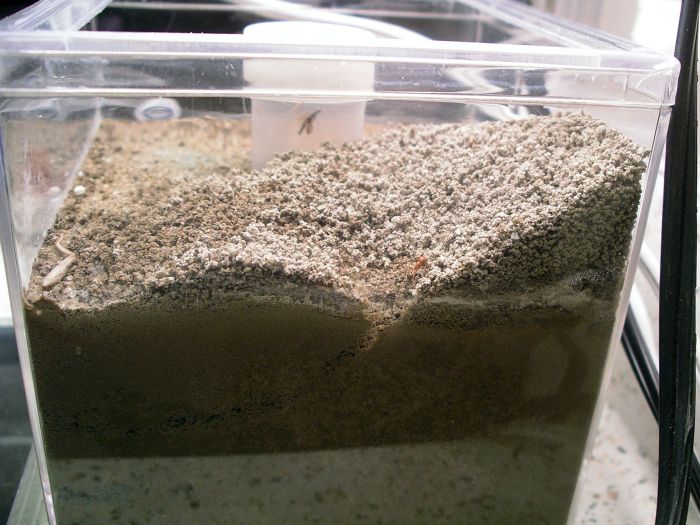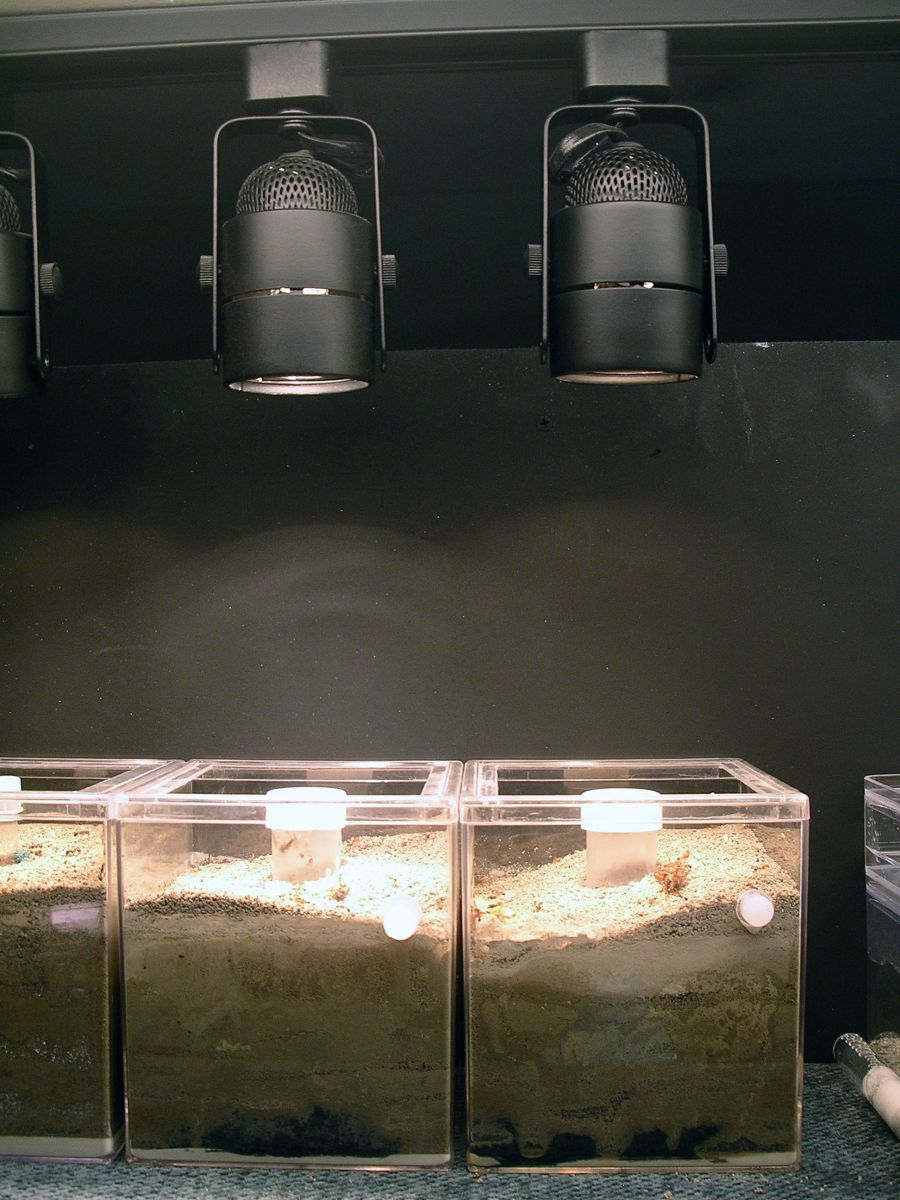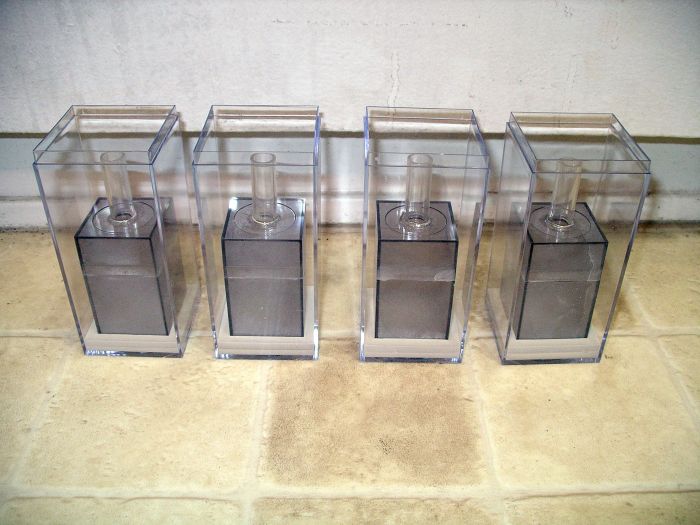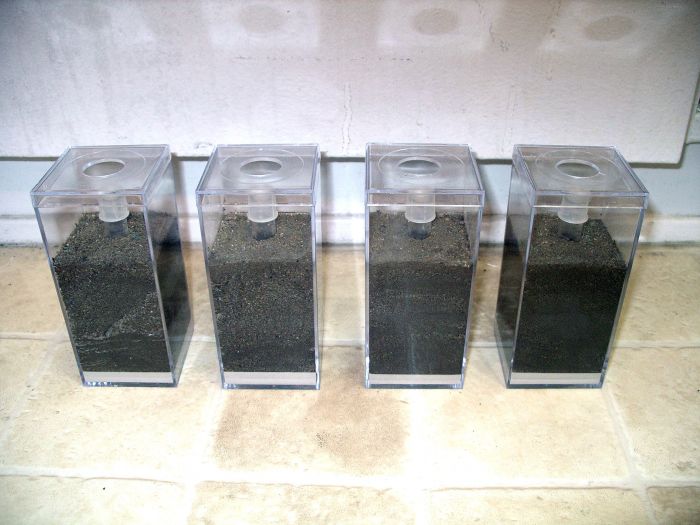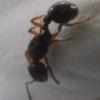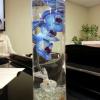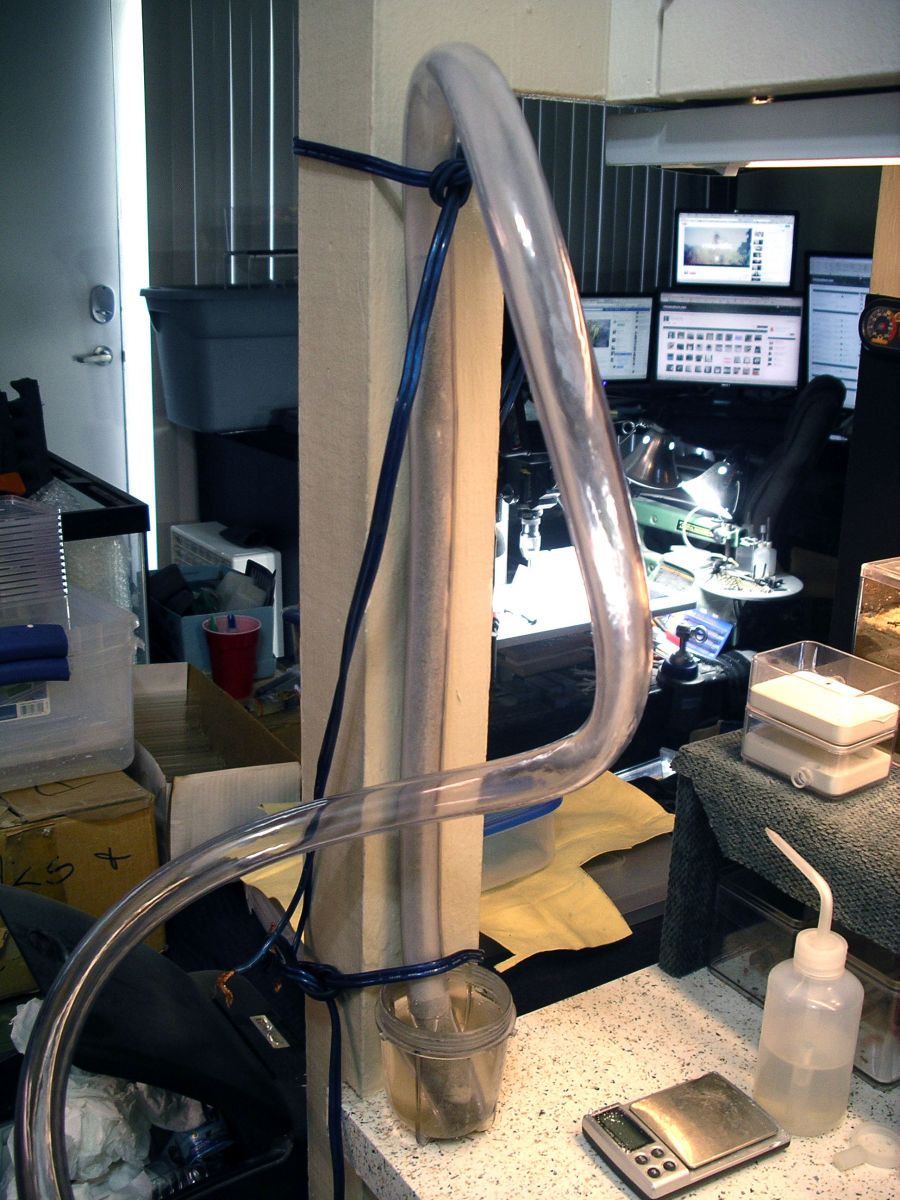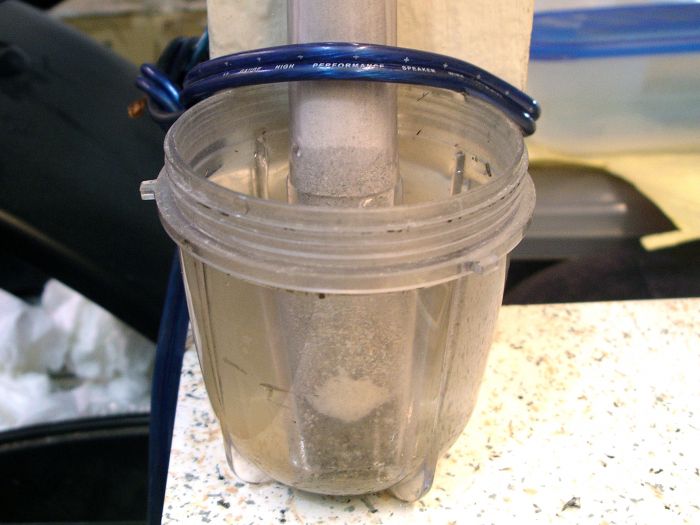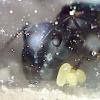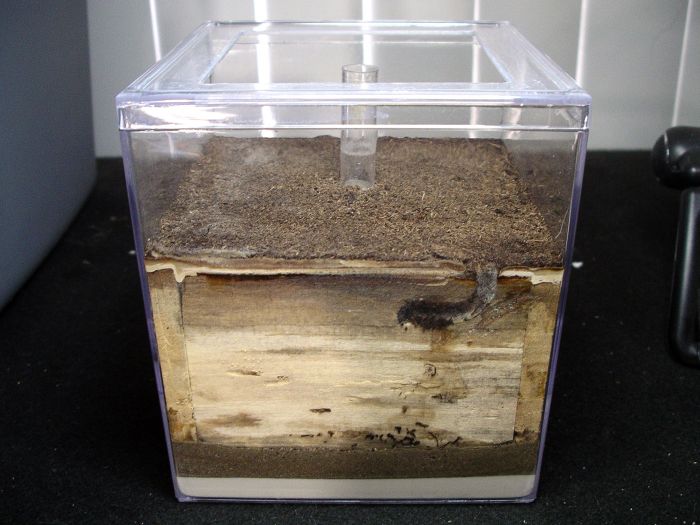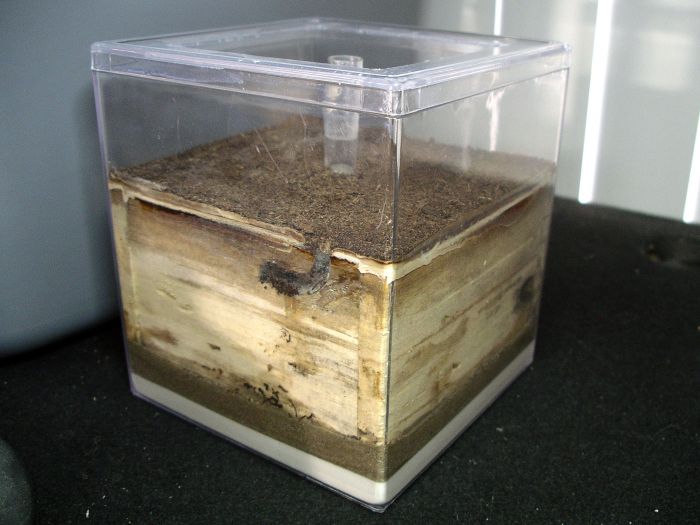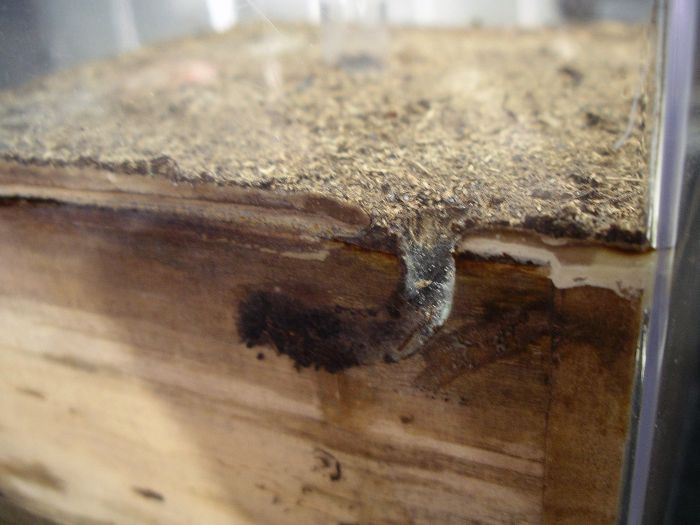First I'm just going to try using plain old mud that will be allowed to harden between the panes. I used two clear plastic boxes--one inside the other to create a sort-of 360 degree ant farm, with a hydration tank in the middle.
Smaller container: 75 mm height
Plastic tubing: 1/2" OD, 7/16" ID, 50 mm length
Hydrostone (hydrated) Bottom of larger container 1st pour: 120 g
Hydrostone(hydrated) Bottom of larger container 2nd pour: 120 g
Hydrostone (hydrated) Top of smaller container: 80 g
Plug hole (for the silicone plugs I cast): 21/64"
Lid overhang: 3/4"
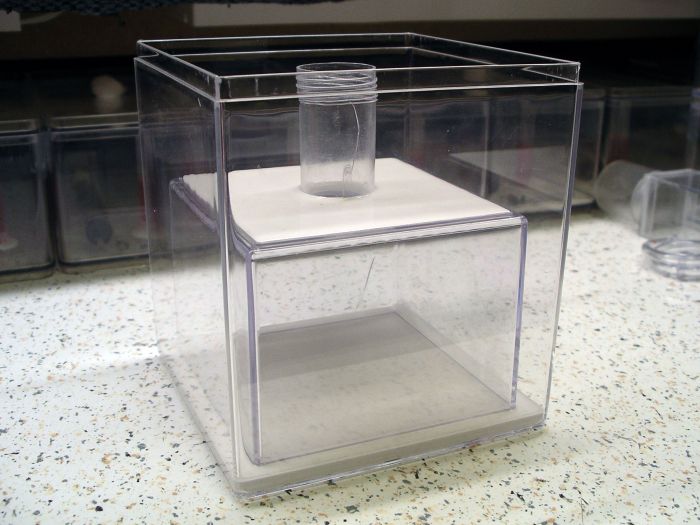
The tank has holes in the very bottom all covered with Hydrostone on both sides. This should allow the water to soak through from the tank, on up the substate around it.
I mixed up a batch of 50 percent sand and 50 percent clay dirt, added water and poured it between the panes.
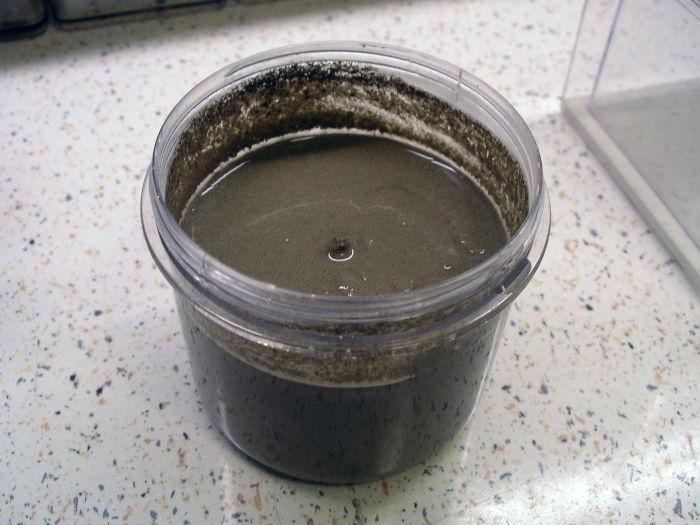
I completely covered the inner container, and left a cylinder sticking out the top to add water. I dried it with a fan for a while, and once it was hard enough, I hooked it up to the broken old jar I've been keeping a colony of Pogonomyrmex californicus in.
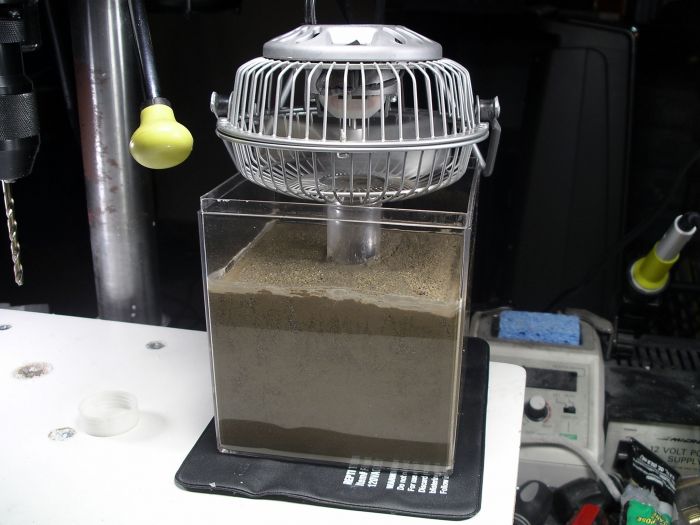
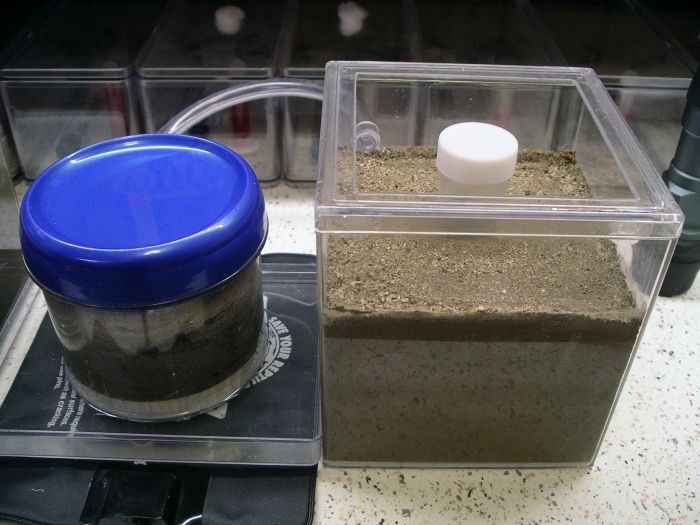
The colony immediately started digging like crazy and moved in just two days later. As you can see, this is very sturdy, but horrible for visibility.
